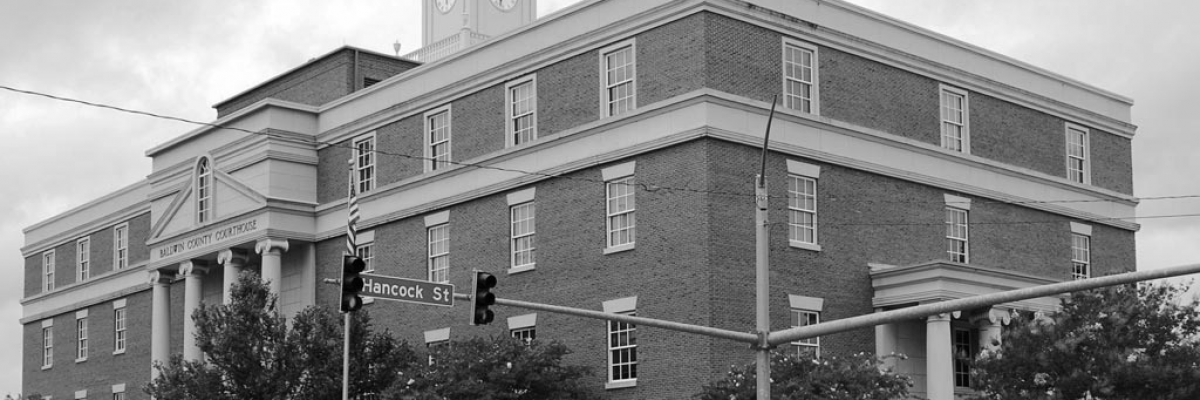History

Developed on lands once held by Creek Indians, Baldwin County lies in central Georgia. Established in 1803, the county remembers Abraham Baldwin, a member of the Continental Congress and author of legislation that established the nation’s first charter for a state-supported university, the University of Georgia. Milledgeville, the county seat, served as the state capital for 61 years. It is named for John Milledge, a Revolutionary leader, member of Congress, Georgia governor, and donor of most of the land on which the university was built.
County Seat
In June 1806, the first Baldwin County court session was held in a log cabin in Hillsborough (a small settlement located in present-day Jasper County). In December 1807, the legislature formed four new counties from portions of Baldwin County. The same month, the legislature designated Milledgeville county seat since Hillsborough was now part of newly created Randolph County (later renamed Jasper County ). Milledgeville was laid out to be Georgia‘s new state capital and first settled in 1803. Incorporated as a town on December 8, 1806, Milledgeville was named for former governor John Milledge (1757-1818).
Courthouse History
Baldwin County‘s first courthouse was a log cabin owned by George Hill in settlement of Hillsborough. Here, the first court session was held on June 26, 1806. On December 22, 1808, the General Assembly authorized Baldwin County to levy a tax to build a courthouse on the southeast corner of Penitentiary Square. Until the courthouse could be erected, county court sessions were to be held in a rented house. Baldwin County‘s first real courthouse was completed in 1814 at the cost of $3,975. This building was used until replaced by a larger courthouse built on the same site in 1847. This courthouse burned in 1861, after which court sessions were held in the Georgia Capitol, the Milledgeville Opera House, and the local Masonic Hall. In 1883, the legislature authorized Baldwin County to borrow up to $25,000 to build four fireproof county offices, as well as a courthouse on the site of the former courthouse. In 1885, work began on the new courthouse, which was completed in 1887. This courthouse was remodeled in 1937 and 1965. After local option sales tax referendums were approved in 1990 and 1992, planning began on a new courthouse, and the construction of a new courthouse began in 1995 and was completed in 1997.

